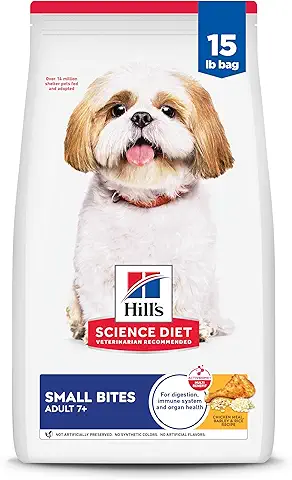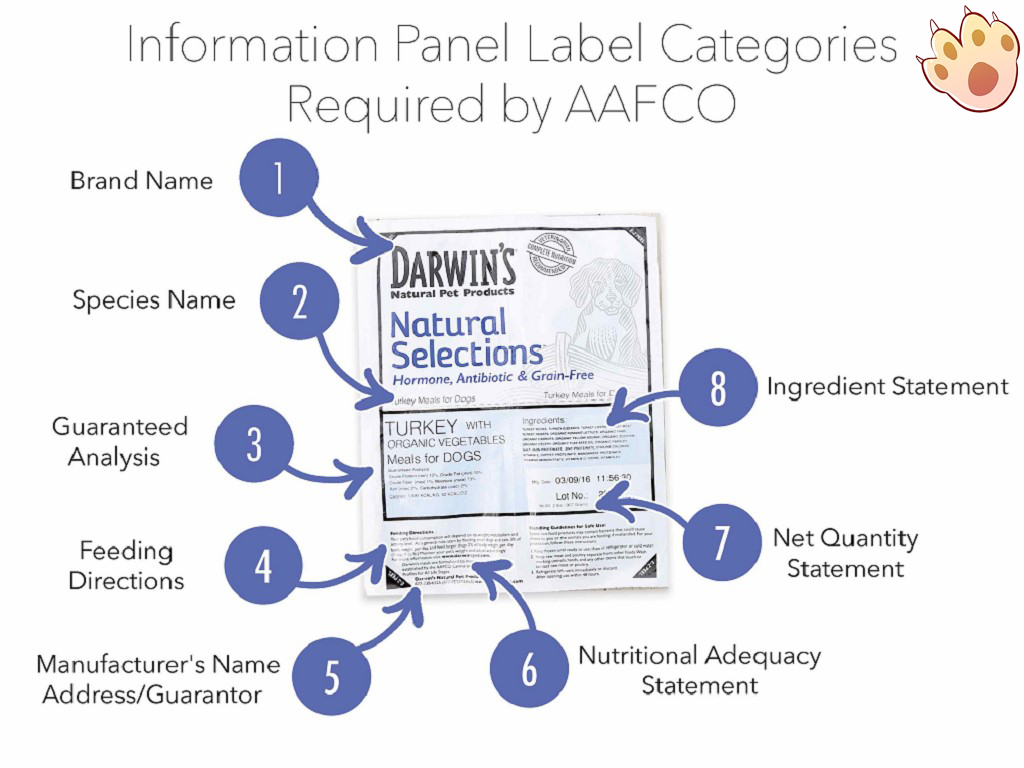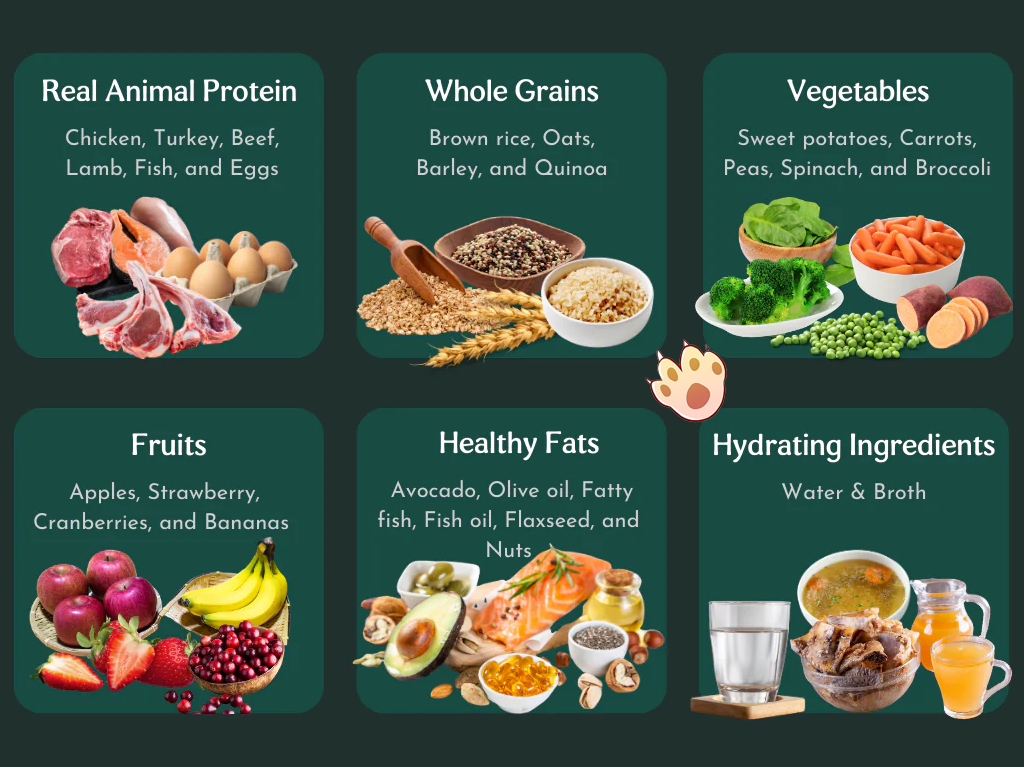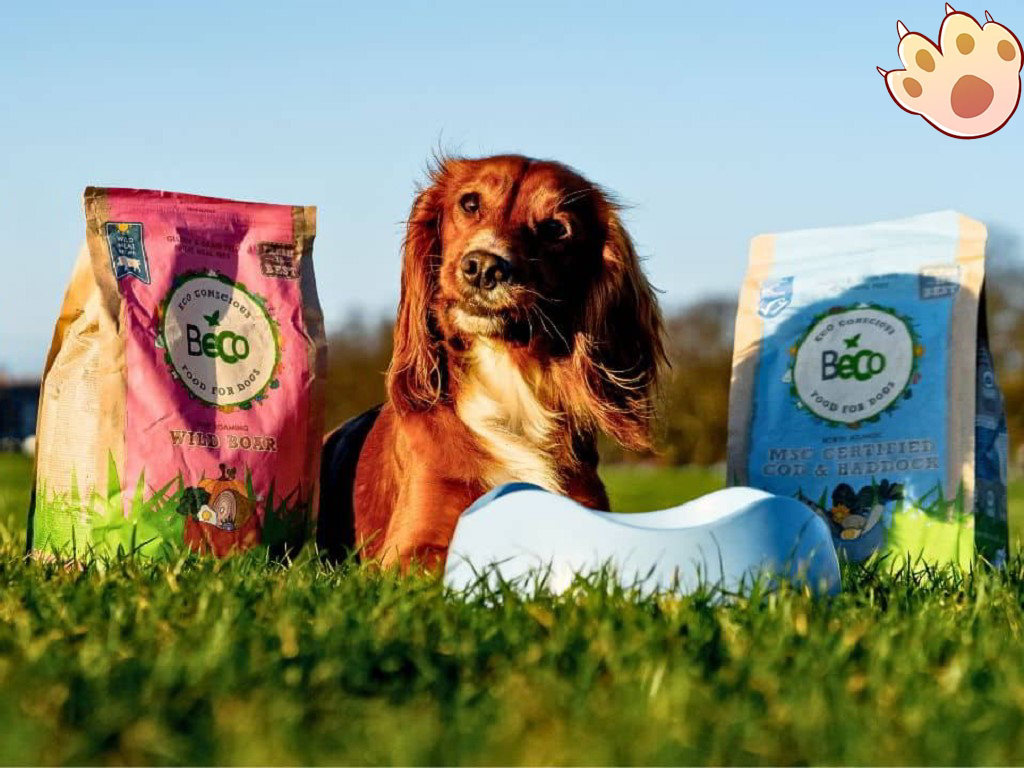
As a new dog owner, it's normal to be overwhelmed by the variety of dog food options on the market. It's also easy to be tempted to try every feeding method that claims to be better.
Howerver, like humans, every dog's dietary needs are different and are generally determined by four important factors:
Dog Breeds
Dogs' Age
Dog’s Activity Level
Dogs’ Medical Conditions
Although your dog’s vet can help you to choose the most suitable food for your companion, it’s still necessary to understand food ingredients and dog food labels. This article will help you to solve these problems.
This video is owned by the original creator on YouTube and is embedded in compliance with YouTube's Terms of Service. Our website provides independent commentary and analysis.
 Check this recommended dog food on Amazon
Check this recommended dog food on Amazon
This post contains affiliate links. We may earn a small commission if you purchase through these links, at no extra cost to you.
1.Learn about Dog Food Label Format
Dog food label format typically follows a standardized format that includes several key sections required by pet food regulations. And all dog food labels have similiar format:
1.1Product and Brand Name
Product and brand name are crucial for dogs owners to make informed choices about what they feed their dogs. Generally, well-known brands are your best choice.
1.2Quantity
The quantity listed on the label indicates the amount of food inside the container. This may be measured by product weight, liquid volume, or count. Products can vary in density (think wet food vs. dry food, for example).
1.3Guaranteed Analysis
The guaranteed analysis typically shows the levels of essential nutrients present in the food. Such as the percentages of crude protein, crude fat, crude fiber, moisture, calcium, and phosphorus, as well as the milligram amounts of selenium, vitamin A, vitamin E, ascorbic acid (vitamin C), and omega-3 fatty acids.

1.4Ingredients
Ingredient list is a crucial component that helps pet owners evaluate the quality and nutritional value of the food. And it usually must be listed in descending order by weight.
 Check this recommended dog food on Amazon
Check this recommended dog food on Amazon
This post contains affiliate links. We may earn a small commission if you purchase through these links, at no extra cost to you.
1.5Nutritional Adequacy Statement
Nutritional adequacy statement is also called an AAFCO (Association of American Feed Control Officials) statement, this will tell you whether the diet is complete and balanced according to AAFCO standards for a particular life stage, from puppy growth to adult and senior maintenance.
1.6Feeding directions
Feeding instructions will usually instruct you on how much food to feed your dog based on factors such as weight, age, and activity level.
1.7Manufacturer's Name and Address
Manufacturer's name and address serve several important purposes related to transparency, accountability, and consumer trust.
1.8Calorie Statement
Calorie statement provides important information about the energy content of the food. It helps pet owners manage portion sizes and maintain their dog’s healthy weight.

2.Focus on Key Ingredients in Dog Food:
When reading dog food labels, it's crucial to look for essential ingredients that suggest a well-balanced and nutritious diet for your pu. The following are some key dog food ingredients to focus on:
2.1Named Protein Sources
Named protein sources refer to clearly identified meats or animal products used as primary protein ingredients. Usually, high-quality meat sources can include whole proteins like fish, chicken, and beef, or selected meats like turkey, rabbit, or lamb.
 Check this recommended dog food on Amazon
Check this recommended dog food on Amazon
This post contains affiliate links. We may earn a small commission if you purchase through these links, at no extra cost to you.
2.2Healthy Fats
Healthy Fats are essential nutrients that support your dog’s overall well-being, including skin and coat health, brain function, and energy levels. Especially Omega-3 and Omega-6 fatty acids. Therefore, seek out healthy fat sources such as chicken fat, fish oil, or flaxseed oil, whether they come from animal or plant-based origins.
2.3Digestible Carbohydrates
Digestible carbohydrates in dog food refer to energy-providing ingredients that dogs can easily break down and use for fuel. For example, whole grains, fruits, and vegetables are easily digested by your dog and converted into energy.
2.4Whole Grains
Whole grains are unrefined grains that retain all parts of the grain kernel — the bran, germ, and endosperm — making them a nutritious source of carbohydrates, fiber, vitamins, and minerals for dogs.
2.5Fruits & Vegetables
Fruits and vegetables are rich in vitamins, minerals, and antioxidants. Ingredients such as sweet potatoes, carrots, peas, blueberries, apples, and even pumpkin can provide essential nutrients for dogs and boost their immune systems.
2.6Vitamins and minerals
Slect food that are rich in essential vitamins and minerals, such as vitamin E, vitamin C, zinc, and calcium.
2.7Prebiotics and probiotics
Prebiotics and probiotics can support a healthy digestive system and improve your dog’s overall gut health.

3.Remember Ingredients To Avoid in Dog Food
Of course, when choosing dog food, in addition to paying attention to the key healthy ingredients in the dog food, it is also important to avoid some ingredients that are not good for dogs. The following lists some ingredients that you need to avoid in dog food.
3.1 Toxic Ingredients
In fact, some dog foods may contain ingredients that may be toxic to dogs in the long term, such as lavender, oregano, and garlic powder. Other less common harmful ingredients include chocolate, avocado, citrus, dairy products, and nuts, which should also be avoided.
3.2 Raw Ingredients
Not only does a raw ingredients pose a risk of salmonella and E. coli to your dog, but you may also be at risk for infection when handling raw foods. Therefore, you need to always feed your dog fully cooked food.
3.3Ingredients Your Dog is Sensitive To
If your dog is sensitive to a particular ingredient, please avoid using it. Sometimes, you don’t know whether your dog is sensitive to a particular food. In this case, please consult your dog vet firstly.

4.How To Choose the Right Dog Food
After learning about the dog food label format, you have mastered the basic way on how to choose the right dog food. The following is the supplementary part for you.
4.1Check the Ingredients
When choosing dog food, you need to select one with high quality and all natural ingredients. It’s best to look for recipes that list proteins like beef, chicken, and sardine as the first ingredient. Besides that, you need to avoid the dog foods which contains too many fillers, by-products, artificial additives, or synthetics.
4.2 Review the GA
The guaranteed analysis provides an overview of the nutritional content of the dog food. Therefore, when you look for dog food, pick the label at least provides levels of protein, fat, fiber, and moisture.
In addition, when you purchasing dog food, it’s crucial to check the product’s lot number and expiration date. And you need to store the dry foods in closed containers, while, keep the lot number and expiration date information from the bag. For canned foods, you’d better run out them as soon as possible. The reason is that the open canned food can only be refrigerated for a few days.

Last but not least, the ideal food for your dog are depend on their unique needs and personal preferences. However, if you want to change a new food for your dog, it's necessary to discuss it with your dog’s vet. And no matter which option you choose, prioritize high-quality formulas with all-natural ingredients to promote a healthy, natural life for your pup.
 Check this recommended dog food on Amazon
Check this recommended dog food on Amazon
This post contains affiliate links. We may earn a small commission if you purchase through these links, at no extra cost to you.
2018-2025 © PupsLover.All Rights Reserved.